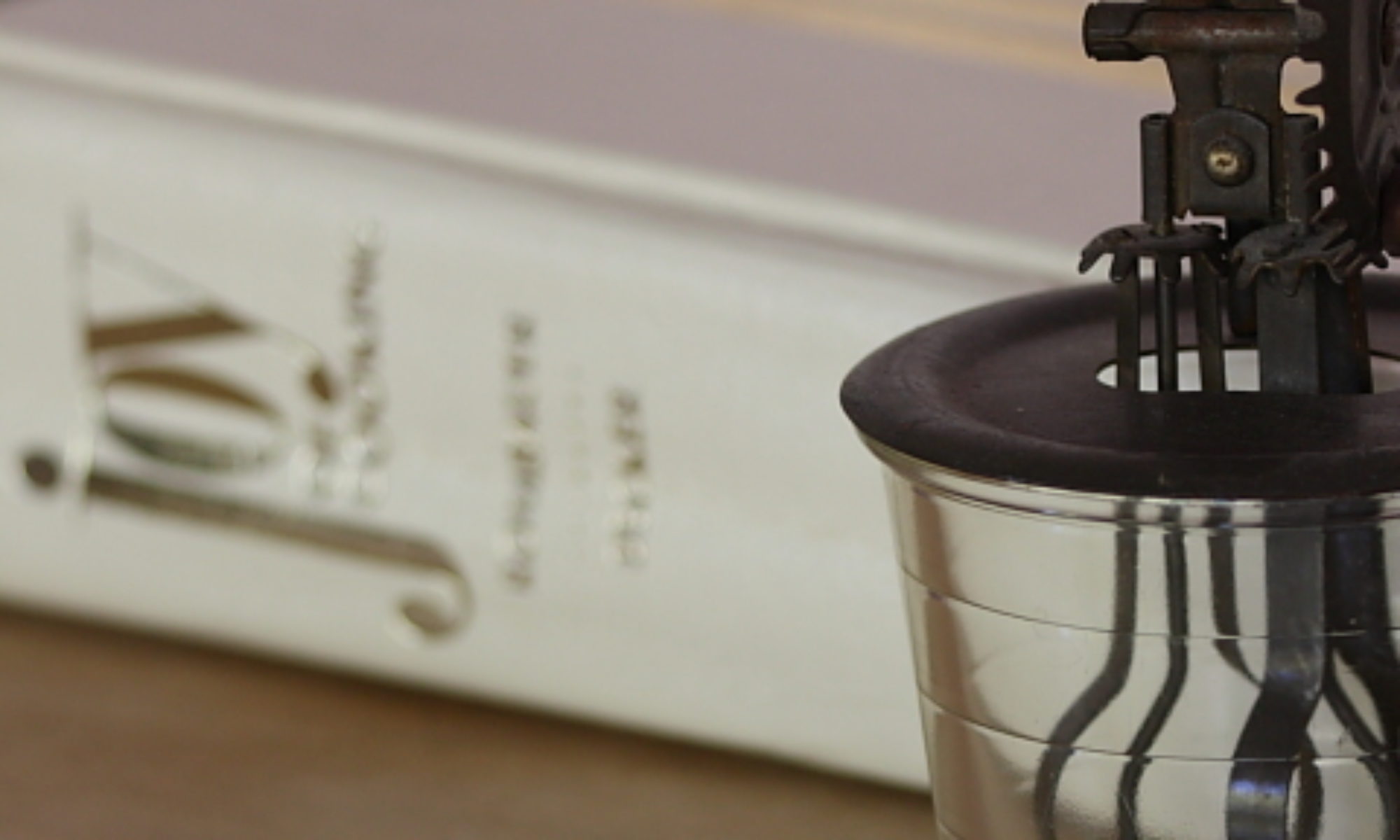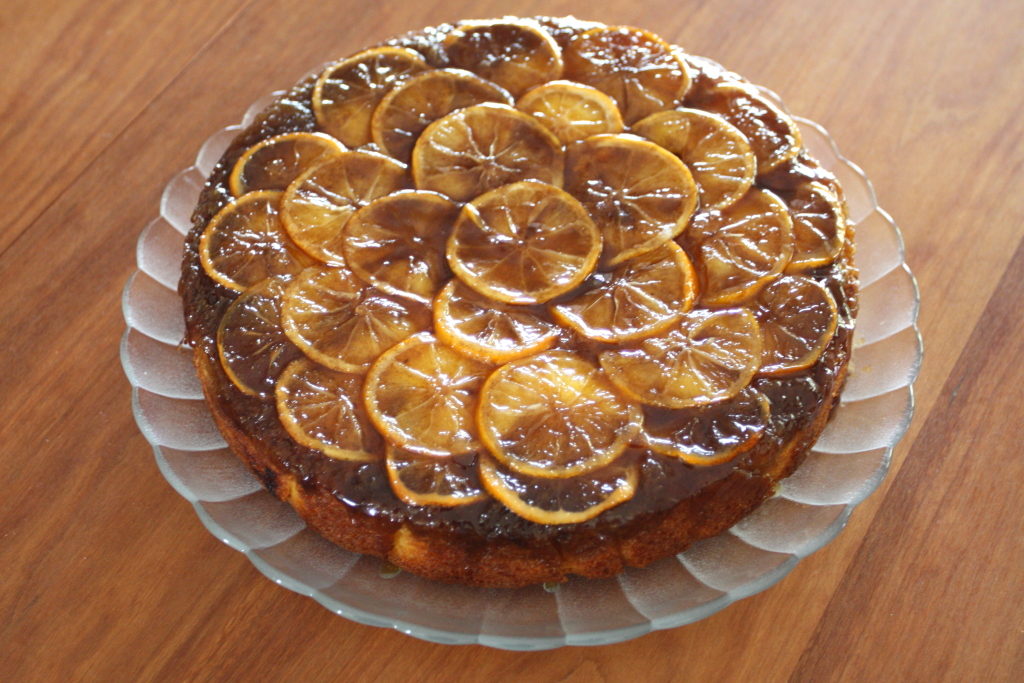
As we mentioned previously, we picked up a couple of pounds of Meyer lemons a week or so ago. Now, Meyer lemons aren’t your standard lemons. Instead, they’re believed to be a cross between an orange and a lemon, giving them a sweeter, more complex taste. Whenever we see them available, we pick them up, trusting that we’ll find a use for them.
Our use for the remaining Meyer lemons (about 5, total) is this Meyer lemon Cornmeal Cake. Now, this is not our creation; we found it here, where the writer explains that the idea comes from “pastry chef Hannah Buoye, of A16 Rockridge in Oakland.” You might think that cornmeal is an odd ingredient for a cake, and we’d tend to agree, except we’ve had cake made with cornmeal before and found it very tasty.
Meyer Lemon Upside-Down Cornmeal Cake
Ingredients
- Unsalted butter for greasing
- 3/4 cup unsalted butter room temperature, divided
- 150 g light brown sugar (packed 3/4 cup)
- 3 whole Meyer lemons plus zest of 2 Meyer lemons
- 200 g granulated sugar (1 cup)
- 140 g all-purpose flour (1 cup)
- 110 g fine cornmeal (3/4 cup)
- 2 teaspoons baking powder
- 1/4 teaspoon salt
- 1/2 cup buttermilk room temperature
- 1 teaspoon vanilla extract
- 2 large eggs room temperature
Instructions
- Preheat oven to 350°F. Butter a 9-inch springform pan. Line with parchment. Butter parchment.
- Bring 1/4 cup (1/2 stick) of butter and brown sugar to a boil in a saucepan over medium heat, stirring often. Pour into prepared pan, spreading evenly.
- Slice the whole lemons very thinly and discarding seeds; arrange on bottom of the pan, working from the center out, and overlapping lemon slices by approximately 50%. Set aside.
- Rub lemon zest into sugar until it is like wet sand.
- Beat butter in a stand mixer fitted with the paddle attachment on medium until smooth and creamy. With the mixer running, slowly add sugar and beat until pale and fluffy, about 4 to 5 minutes.
- Meanwhile, in a medium bowl, whisk together flour, cornmeal, baking powder, and salt. Add vanilla extract to buttermilk.
- Add eggs, one at a time, beating on medium until completely incorporated and smooth, about 1 minute, before adding the next.
- Add one-third the flour mixture, beat on low until just incorporated, about 15 seconds, then add half the buttermilk and vanilla, beating on low until just incorporated. Repeat adding flour and buttermilk in the same way, then finish up by beating in the last third of the flour mixture.
- Pour and scrape batter into pan, leveling the top.
- Place pan on baking sheet and bake, 55 to 60 minutes, or until dark brown on top, and the cake feels firm to the touch and shows no sign of jiggling when moved.
- Cool at least 2 hours. Release sides of the springform pan, and invert onto a plate. Remove parchment.
Ingredient discussion:
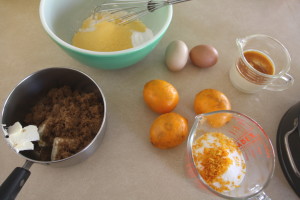
While you could use regular lemons for this cake, we really think that it’ll be better with Meyer lemons, with their sweeter, less harsh, taste. Although, we also think this would be really good with flavorful oranges, too. Pretty much everything else here is standard: use unsalted butter so you don’t throw off the flavor with too much; salt; and, use the best eggs you can find: for us, that’s eggs from Josh’s Foraging Fowls. Finally, you may note that we use buttermilk instead of ordinary milk (which was called for in the original recipe). Buttermilk makes for a lighter, slightly tangy, longer-lasting, cake. For us, it’s a standard substitution in cake recipes.
Procedure in detail:
Preheat oven to 350°F. Place a rack in the center of the oven.
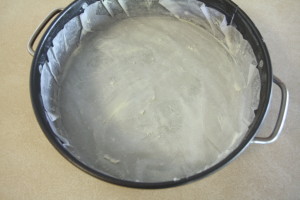
Prepare pan. This is a bit tricky, but we need to line a springform pan with parchment. The easiest way is to cut out a 12-inch circle (we had a plate that was just slightly larger than 12 inches to use as a template) of baking parchment. Now, butter the inside of the springform pan, bottom and sides. The butter will help hold the parchment in place. Press in the parchment and fold/pleat the excess up the sides. If you’re tempted to line the bottom and sides separately, don’t: you’ll have brown sugar caramel sauce leak out. You need to have one piece of parchment to hold that sauce in place. Once you have the parchment in place, give it a good buttering , too.
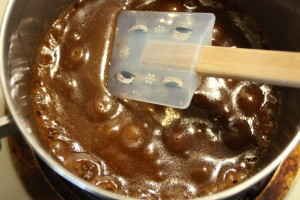
Make caramel sauce. Place 1/2 stick of butter and the brown sugar in a small saucepan over medium heat. Stirring often, bring the sauce to a boil, a nice bubbling boil to ensure the sugar is melted. Once boiling, pour into the prepared pan and either spread it around to make an even layer, or give the pan a few shakes this way and that to coat the bottom evenly.
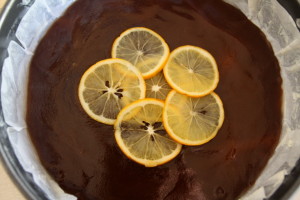
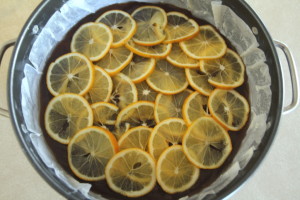
Arrange lemon slices. Slice the three whole lemons very thinly, ideally, about 1/16 of an inch thick, or less). If you have a mandoline, this might be the time to use it. We don’t, so we just do the best we can with a knife. As you work, pick out the seeds and discard. Using the best slices, cover the bottom of the pan, starting from the center and working out, and overlapping the lemon slices by about half. This pattern will show on the finished cake, so take your time to make it look nice.
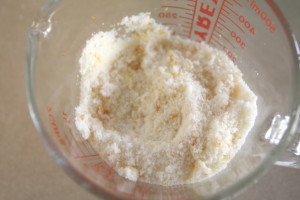
Rub lemon zest into sugar. Measure the sugar into a small bowl and add the lemon zest. Using your fingers, rub the lemon zest into the sugar until it feels like wet sand. This helps to release some of the lemon-y oil trapped in the zest.
Cream butter. Place the remaining butter (1 stick or 1/2 cup) in the bowl of a stand mixer fitted with the paddle attachment and beat on medium until smooth, creamy, and glossy. If it takes more than 30 seconds, your butter isn’t warm enough, so you might want to wait a while and try again.
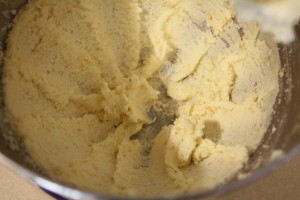
Add sugar. With the mixer still on medium, slowly pour in the granulated sugar. We try to pour it in at about the same rate as it gets mixed into the butter, so that we don’t have a patch of sugar sitting in the bottom of the bowl. Once all the sugar is added, continue beating on medium until the mixture is pale yellow and fluffy.
Whisk dry ingredients. While the sugar and butter are creaming, whisk together the flour, cornmeal, baking soda, and salt in a medium-sized bowl. Give it a good whisking to make sure there are no pockets of baking powder. Might as well mix together the buttermilk and vanilla now, too.
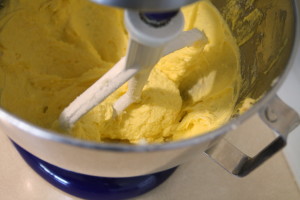
Add eggs. Back to the creamed butter and sugar. Add the eggs, one at a time, beating on medium until fully incorporated, about 1 minute, before adding the next. Scrape down the sides of the bowl before each addition, too.
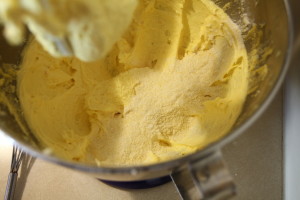
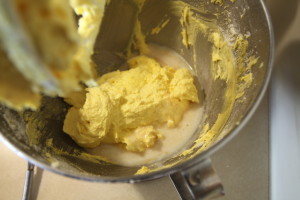
Add flour mixture and buttermilk. We want to add the flour mixture and buttermilk mixture in this order: flour, buttermilk, flour, buttermilk, flour. Each addition of the flour mixture should be about 1/3 the original amount, and each addition of the buttermilk mixture should be 1/2 the amount. Between each addition, run the mixer on low just long enough to incorporate the ingredients, and, after mixing, scrape down the sides and the bottom (dry ingredients sometimes lurk there) of the bowl.
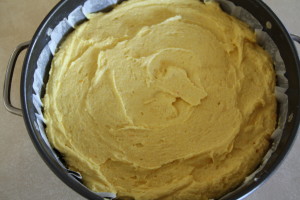
Bake. Pour and scrape the batter into the pan, being careful not to disturb your nice arrangement of lemons. Smooth off the top. Place the pan on a baking sheet (to contain leaks) and bake until the cake is quite brown and firm to the touch, and there’s no sign that the center jiggles when the pan is shaken slightly. This will take 50 to 60 minutes; we will warn you that this is a difficult cake to tell if it’s completely done, so probably err on the side of slightly over-baked.
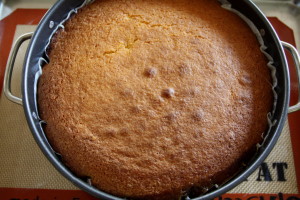
Cool. Set the pan on a cooling rack and let cool at least 2 hours before releasing the sides of the springform pan. If needed, slide a knife between the parchment and the pan to aid in the release.
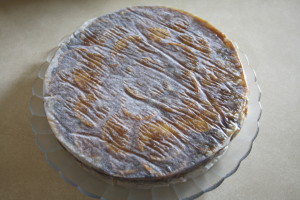
Invert. Place a plate over the top (soon to be bottom), lift, and flip the cake. Carefully lift off the parchment to reveal your lemon design. Slicing will be easiest with either a very sharp knife or a serrated knife.
This is a nice cake to make if you haven’t made a cake in a while. It’s straightforward to make — the most difficult parts are lining the pan and slicing the lemons thinly enough — it looks nice, plus, it has a nice cornmeal texture and taste that people won’t expect, but will enjoy. Because of the cornmeal, this cake seems a bit more savory than the standard, light cake-flour cake, and a bit more substantial; you feel that a small slice and a cup of tea are perfect to keep you going in mid-afternoon, when you still have hours to go before dinner. Four stars.
